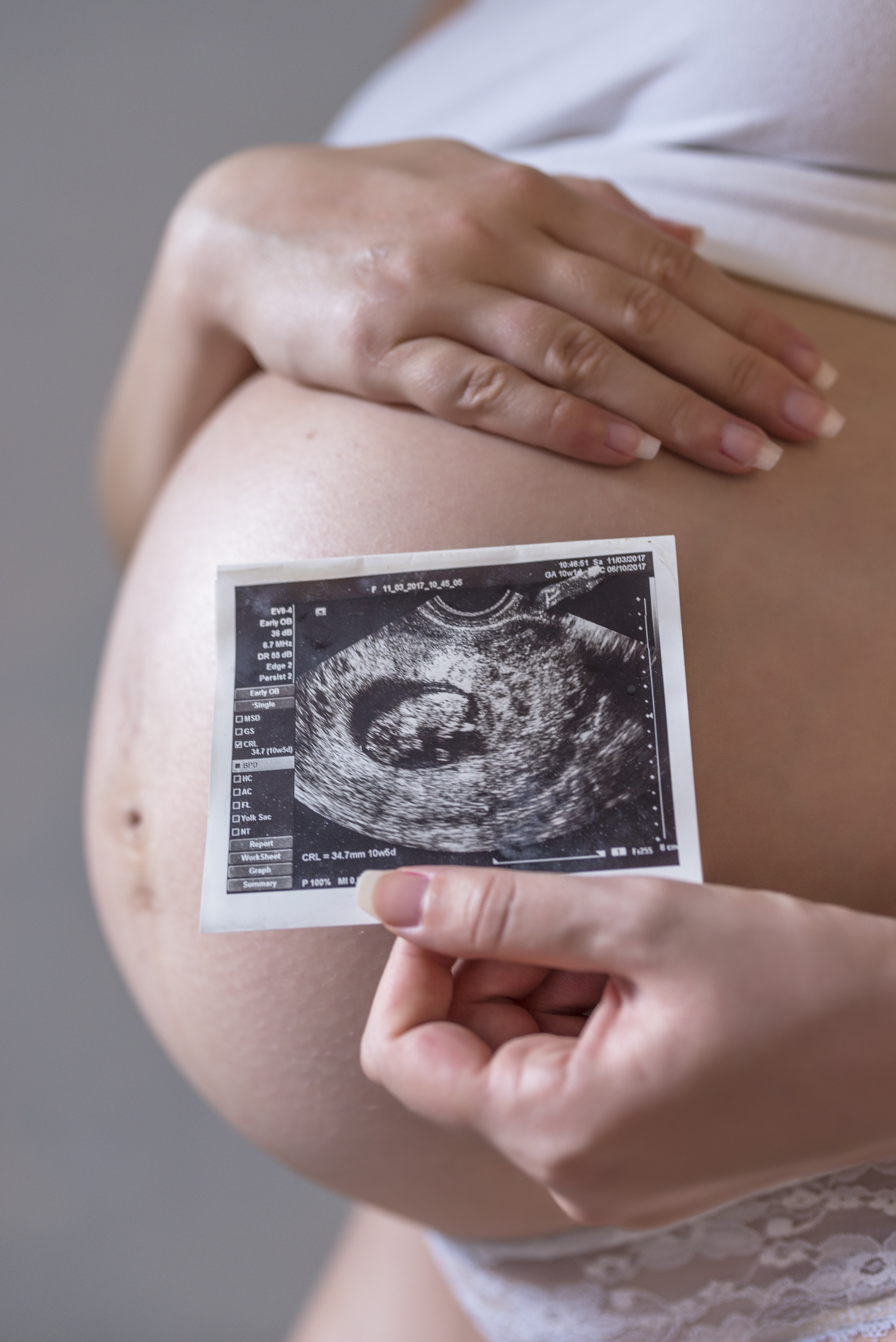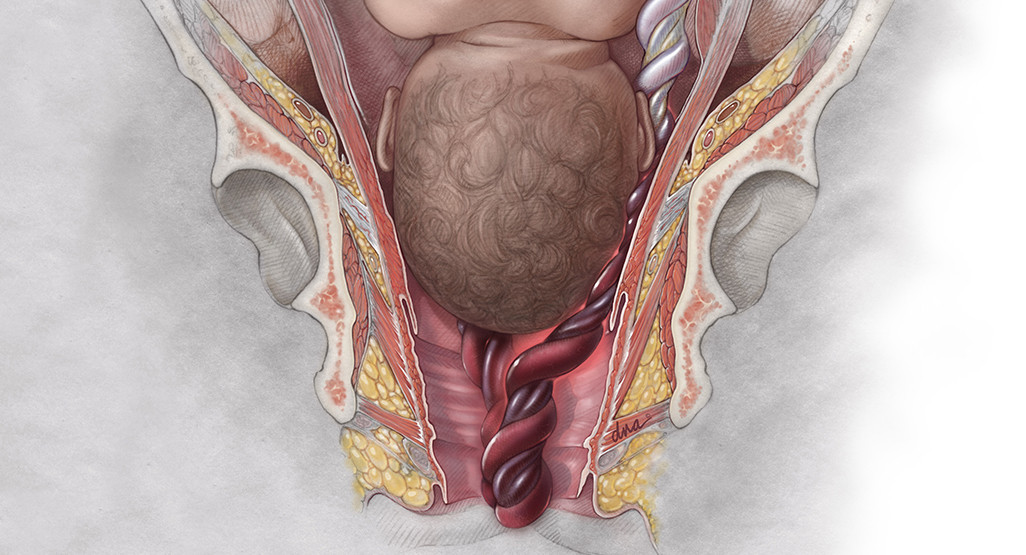Definition
Abortion, also known as miscarriage, is the spontaneous loss of pregnancy or fetal death before the mother's pregnancy reaches 20 weeks. The fetus typically weighs less than 500 grams. Abortion is one of the top five causes of maternal death, alongside hemorrhage, hypertension (high blood pressure) during pregnancy, infection, and prolonged or obstructed labor.
Abortion is one of the causes of bleeding during the first and second trimesters of pregnancy. It is also a public health issue because it contributes to maternal morbidity and mortality. Abortion is a nightmare for every pregnant woman who dreams of having a child.
There are various types of abortions, including:
- Complete abortion: All products of conception (fetal tissue) exit the uterus with the cervix fully open.
- Incomplete abortion: Some fetal tissue remains in the uterus, usually requiring procedures like curettage to remove all tissue completely.
- Inevitable abortion: Abortion that cannot be avoided, even though the tissue is still in the uterus but the cervix is already open.
- Threatened abortion: An abortion that is at risk, with the cervix still closed and the fetus still alive in the uterus. Immediate action is needed to save the baby.
- Missed abortion: In this case, the embryo has died in the womb before 20 weeks of gestation, and all products of conception remain in the uterus. The mother may not realize that the fetus is not developing or has died in the uterus.
Causes
Most cases of abortion are caused by chromosomal or genetic abnormalities in the fetus, preventing the fetus from developing and leading to death. Chromosomal abnormalities cause about 50% of miscarriages in the first trimester of pregnancy. These chromosomal issues often arise from problems during the embryo's division process.
Additionally, several maternal medical conditions can cause abortion, including:
- Exposure to toxic substances early in pregnancy
- Hormonal issues
- Pregnancy infections
- Malnutrition
- Immune system disorders
- Smoking
- Anatomical abnormalities in the uterus
- Systemic maternal diseases such as uncontrolled diabetes
- Thyroid disorders
- Advanced maternal age
- Certain diseases
Routine activities such as exercising, sexual intercourse, and normal work, unless involving exposure to hazardous chemicals, have not been proven to cause abortion. However, always consult with your obstetrician to asses your condition during pregnancy.
Risk Factor
Several factors are associated with an increased risk of abortion:
- History of previous abortion
- Maternal age over 35 years
- Chronic conditions such as autoimmune diseases and uncontrolled diabetes mellitus
- Uterine or cervical diseases
- Malnutrition
- Low or high body mass index (BMI)
- Alcohol and certain drug use
- Invasive prenatal tests, though rare, can carry a risk of abortion, including:
- Genetic tests
- Amniocentesis, a procedure to collect amniotic fluid from the uterus for further examination
- Chorionic villus sampling (CVS), a procedure to collect placental tissue for examination
- Blood clotting disorders
- Blood abnormalities
Symptoms
Symptoms of abortion vary depending on the mother's condition and the type of abortion. Generally, abortion symptoms include:
- Light to heavy bleeding
- Lower abdominal cramps
- Abdominal pain
- Fatigue
- Worsening back pain
- Fever
- Weight loss
- White or pink mucus discharge from the vagina
- Contractions in the abdomen
- Tissue resembling blood clots passing from the vagina
- Reduction in pregnancy symptoms
Diagnosis
To diagnose abortion, doctors will conduct various examinations, starting with a medical interview, physical examination, and additional tests if necessary. The doctor will ask about symptoms, including:
- Date of the last menstrual period
- Main complaints and accompanying symptoms
- History of miscarriages
- History of other diseases
After the interview, the doctor will check the mother's vital signs, including general condition, blood pressure, temperature, respiratory rate, and pulse. A physical exam will follow, examining the external and internal parts of the vagina if needed. Additional tests like ultrasound, blood tests, and urine tests may also be performed.
Management
Abortion treatment varies according to the severity and type of abortion. In mild cases where the fetus can still be saved and is not life-threatening, the doctor may advise complete bed rest for up to 2 weeks and prescribe medications to strengthen the pregnancy.
In severe cases involving partial expulsion of fetal tissue and heavy bleeding, the doctor will assess the mother's condition. The doctor may prescribe certain medications to speed up the expulsion of remaining fetal tissue in the uterus.
If there is a significant amount of remaining tissue, a procedure called dilation and curettage (D&C) may be performed to remove the abnormal tissue from the uterus. If the tissue is not completely removed, the mother can suffer from life-threatening infections. This procedure is usually done under general anesthesia or other types of anesthesia. Only an obstetrician is authorized to prescribe medications and perform this procedure. After D&C, menstruation typically resumes within 4-6 weeks.
Prevention
Here are some preventive measures to avoid abortion:
- Regular antenatal check-ups
These allow you to monitor the development of your fetus, potentially preventing abortion.
- Taking pregnancy supplements
Supplements containing at least 400 micrograms of folic acid per day can help reduce the risk of fetal defects and abortion.
- Avoiding exposure to toxic substances
Avoid harmful exposures such as radiation, alcohol, and smoking, especially in the first trimester.
- Adopting a healthy lifestyle
The following lifestyle modifications can help reduce the risk of abortion:
-
- Eating a balanced diet with cooked vegetables and meat
- Avoiding seafood high in mercury
- Eating fruits daily
- Sleeping 7-8 hours a day
- Drinking enough water
- Limiting salt and sugar intake during pregnancy
- Pre-marriage screening
This helps identify conditions that could increase the risk of abortion and treat them accordingly.
- Reducing caffeine intake
Limit caffeine to no more than 200 milligrams per day during pregnancy.
- Maintaining a normal BMI
Avoid being underweight or overweight to reduce abortion risk.
Complications
Abortion can lead to various complications, including:
- Bleeding: Continuous bleeding can occur due to an open cervix. If bleeding persists with symptoms like cold, pale skin, and shortness of breath, immediate emergency care is needed.
- Infection: About 3% of women can develop an infection due to remaining fetal tissue in the uterus.
- Asherman's Syndrome: Uterine adhesions are a complication of dilation and curettage surgeries that can cause this syndrome, but it is uncommon.
- Recurrent abortion: The risk of abortion increases after an initial abortion.
- Depression and anxiety disorders are common complications, especially for mothers who have already waited for a child for a long time. Consulting a psychologist or psychiatrist is essential to ensuring mental health after abortion.
When to See a Doctor?
If you are under 20 weeks pregnant and experience bleeding and severe abdominal pain, seek medical attention immediately to assess your condition. Prompt first aid and treatment can provide the best outcomes.
Looking for more information about other diseases? Click here!
- dr. Alvidiani Agustina Damanik
Cleveland Clinic – Miscarriage. (2022). Retrieved 1 August 2022 from https://my.clevelandclinic.org/health/diseases/9688-miscarriage
MayoClinic – Miscarriage. (2021). Retrieved 1 August 2022 from https://www.mayoclinic.org/diseases-conditions/pregnancy-loss-miscarriage/symptoms-causes/syc-20354298
WebMD – Miscarriage. (2020). Retrieved 1 August 2022 from https://www.webmd.com/baby/guide/pregnancy-miscarriage










